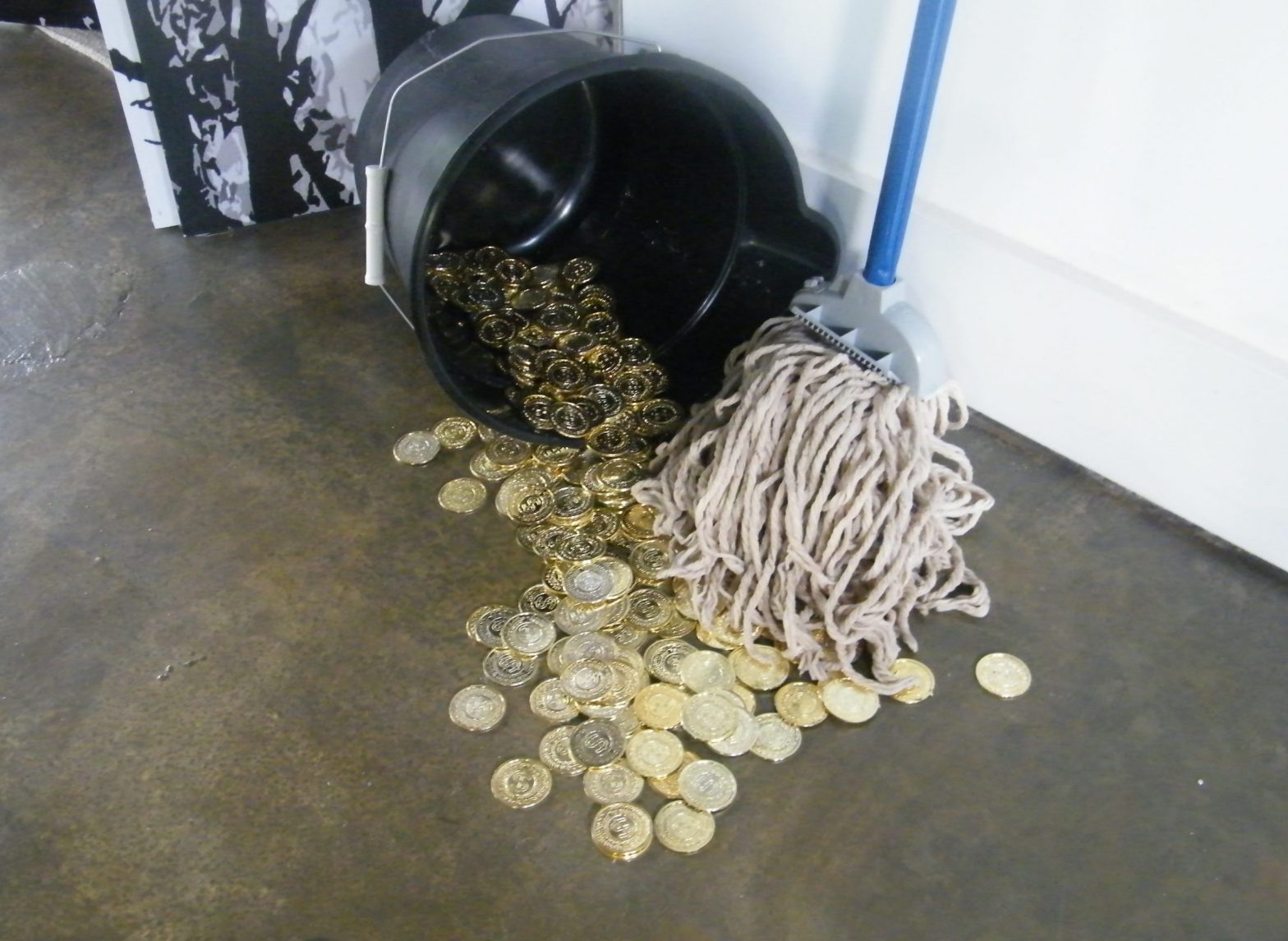By Matt Dhillon
Water surrounds us. It’s in the sky, on the earth, and underground. About 60 percent of the human body is water and about 70 percent of the surface of the globe is water. On the bottom of the ocean, life can exist without air or light—but not without water. On land too, a source of water is a source of life.
Artist Martha Stafford appreciates the crucial role water plays in the world, and in “The Water Appreciation Experience,” an interactive installation on display at 1326 E. High St., she invites guests to think more deliberately about their place in the water cycle.
Consider some of the crucial man-made fountains of this life-giving essence: dripping faucets, hoses, shower heads, and plastic bottles. Stafford celebrates these household objects and their importance as sources of water.
“I want people to realize that water is something sacred, that it’s something to be valued and not taken for granted,” she says.
Visitors of the installation enter a meditative, contemplative environment washed in the sound of lapping water. The tour travels clockwise to several stations where guests stop for water—water for drinking, water for bathing, water for cleaning, and water for recreation.
As they make their way through the exhibition, guests carry a vessel of a weight that corresponds to a certain volume of water. The experience is intimate, physically feeling the weight of the water you need to survive. Visitors pass images of Ragged Mountain Reservoir, as well as pictures of a dry land where the only source of water is a modest pipe. A section with images of figures carrying drinking water transitions into a section with a household toilet, juxtaposing the two and pointing out that the tank also flushes drinking water.
The tour takes a reverential perspective toward water and the channels it takes to reach us. There is an altar-like feeling at each station, and Stafford says she had the ritualistic Stations of the Cross in mind when putting together the journey. She’s also interested in expanding the water-based rituals the space can facilitate as she learns more about them.
“There’s a whole ceremony in some churches where they wash your feet,” Stafford says, “and I thought, ‘Oh that would be pretty wild, to see if I can find some ministers who would come and do that!’” But there are some simpler ideas too. “What I would like to start with is see if I can have people come and do a water meditation in the morning. Just come and sit here quietly and listen.”
Guests start the tour at the wishing pools with a water-based ritual. They pour a glass of water, bring it in close, and whisper a wish into the cup. They drink one portion and pour another portion into the pool.
“That kind of ceremony is done by different Native American groups,” Stafford says. The gesture does have a strong impact. As some of the wished upon water enters the pool, as well as the body, it suggests that all water is really one water—drops into pools, pools into streams, streams into rivers, and so on.
The end of the circuit takes a more domestic turn, and presumably more familiar. The visitor approaches water fixtures they would use every day—their sink, their toilet, their shower, their bathtub—while reading statistics about how much fresh water goes through them, sitting for two minutes with aromatics, and reflecting. The water itself is represented by gold coins to show its value.
Stafford, who formerly ran the Charlottesville Cooking School, says it’s the basic stuff we overlook. One of them is drinking enough water.
“It’s such a simple obvious thing, but because it’s so obvious people take it for granted,” she says. “For many people that come here, they’ve never been quiet for 25 minutes, they don’t drink water, they don’t ever use these aromas that change your mood, so I see people visibly come in agitated and leave here feeling more peaceful.”
There are other special things about water. It is called “the universal solvent” by the United States Geological Survey because it has a greater power to dissolve than any other liquid. It is the only non-metallic liquid that expands when it freezes, which is why ice floats and why bodies of water stay warmer in their deepest parts during winter. Water is abundant, but most of the world’s water is in the ocean, and most of the freshwater that remains is frozen in glaciers. That leaves about 1 percent accessible as drinking water.
Access to clean water is not as easy as it may look on such a watery planet. Drought and demand can make water resources scarce in many environments. Pollution takes a heavy toll, too. All forms of pollution eventually make their way into water. Like the water from the wishing pools, all of the water we touch joins the rest of the water around us. The healthier we keep our waterways, the healthier we keep our world.
To schedule your viewing of “The Water Appreciation Experience” visit https://www.thewaterappreciationexperience.com/
